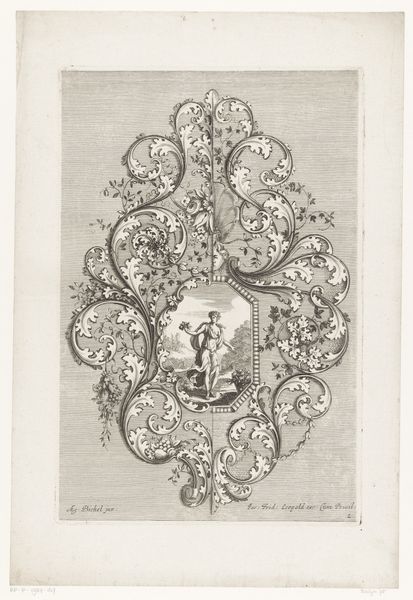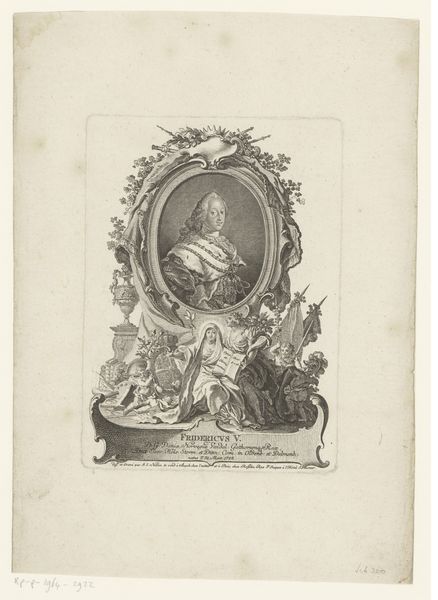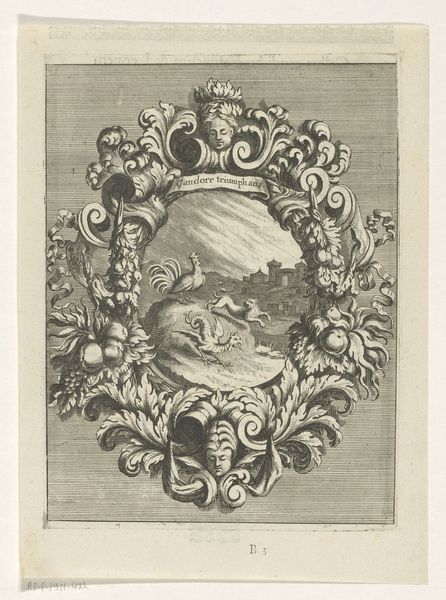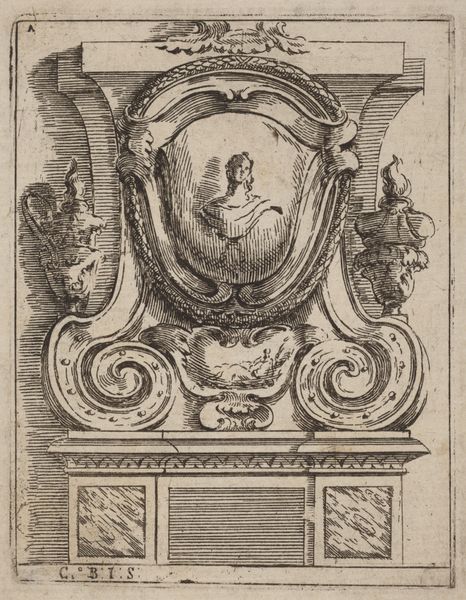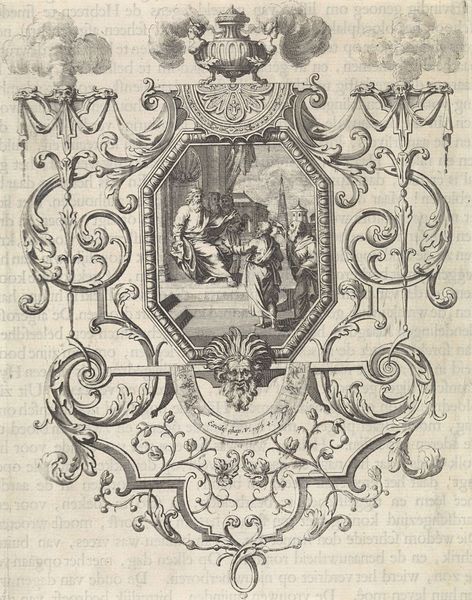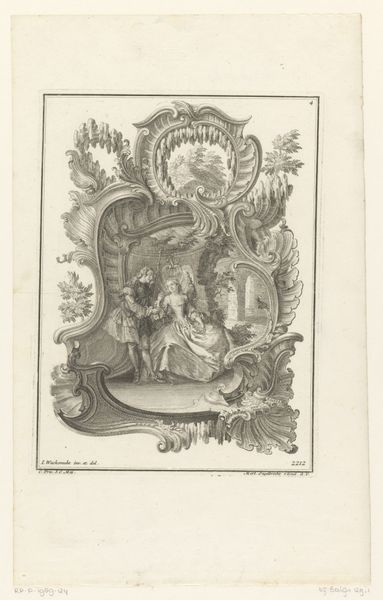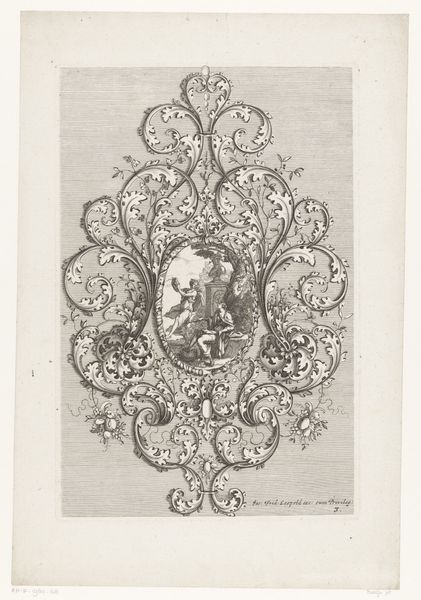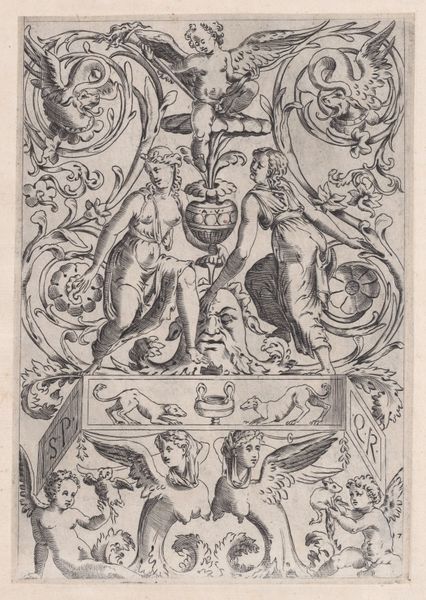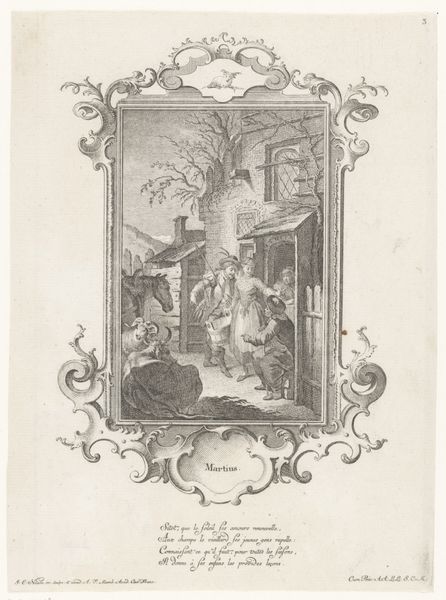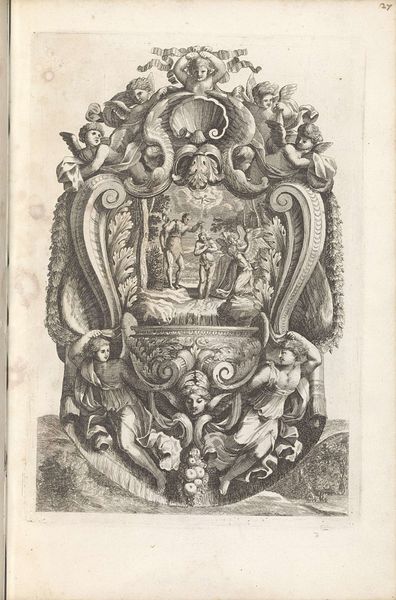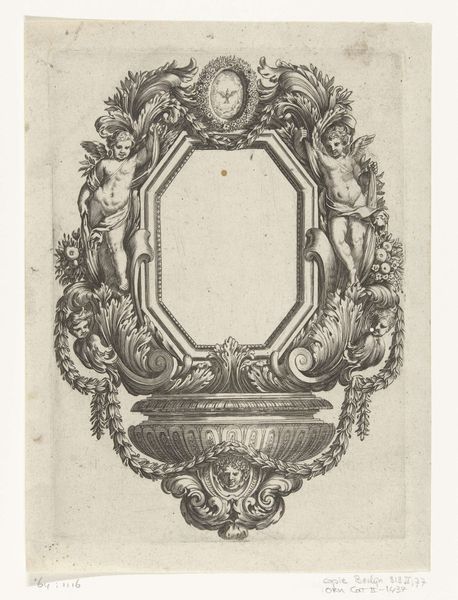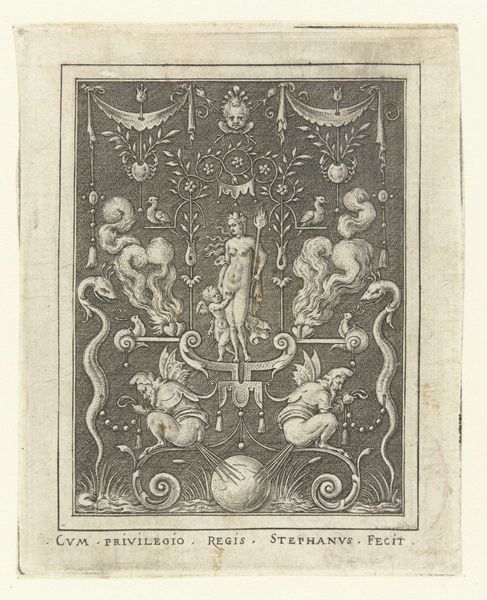
Auricular Cartouche with the Painter Hans von Aachen, the Goldsmith Paulus van Vianen, and the Sculptor Adriaen de Vries 1648 - 1658
0:00
0:00
drawing, print, engraving
#
portrait
#
drawing
#
baroque
# print
#
men
#
genre-painting
#
engraving
Dimensions: Sheet: 8 9/16 in. × 7 in. (21.8 × 17.8 cm)
Copyright: Public Domain
Curator: Jacob Lutma's print, "Auricular Cartouche with the Painter Hans von Aachen, the Goldsmith Paulus van Vianen, and the Sculptor Adriaen de Vries," dating from 1648-1658, showcases a fascinating confluence of artistic portraits. I find myself reflecting on the very notion of creative genius, especially how artists like Lutma and those depicted secured recognition through the art market and critical acclaim. Editor: The curling, organic frame is really something, isn't it? It evokes a kind of visceral, almost bodily, sense – hence "auricular," I suppose? But it makes the portrait of these men feel almost womb-like, nurturing the very seeds of artistic creativity. Curator: That frame you observe—very typical of the Baroque—serves, yes, as an almost reproductive, but certainly as a deeply ornamental declaration of value, wouldn't you agree? And it’s essential to consider where an object like this might circulate. Lutma created these prints not just for admiration but as promotional material, to circulate his and the depicted artists' reputations among elite circles. Editor: I think that Baroque frame really does its job directing our eye to the images held within, yet in a slightly grotesque way. The central image of the three artists seems like an icon itself. The artist's tools of the trade are very pointed. It is really celebrating this time of creative power, correct? Curator: Precisely. Think of the print's accessibility, the way it could be acquired and displayed. It helped establish a visual language for the arts. To collect this print meant an invitation to an enlightened space for discussion and appreciation, all the more powerful when the patronage system still strongly dictated artistic production and visibility. Editor: And consider the symbols. Each artist seemingly holding, using, displaying their trade-defining artistic item; Aachen holding his brush, and so on. Do you think those symbols solidify their identity? Curator: Without a doubt. Consider this not just as portraiture but a visual record. It highlights artistic labor. And how that labor shapes both personal identity, and broader cultural heritage. The print then becomes an agent of cultural preservation. Editor: It is such an intricate construction to think about; the frame nurturing them, their icons showcasing their profession. Almost like reliquaries. Curator: That reliquary parallel offers a rich perspective. It frames their images in an historical record worthy of future engagement. Editor: Well, I definitely won't look at baroque frames the same way again! Curator: Indeed, seeing these types of objects through the lens of socio-economic realities only enriches their cultural power!
Comments
No comments
Be the first to comment and join the conversation on the ultimate creative platform.

